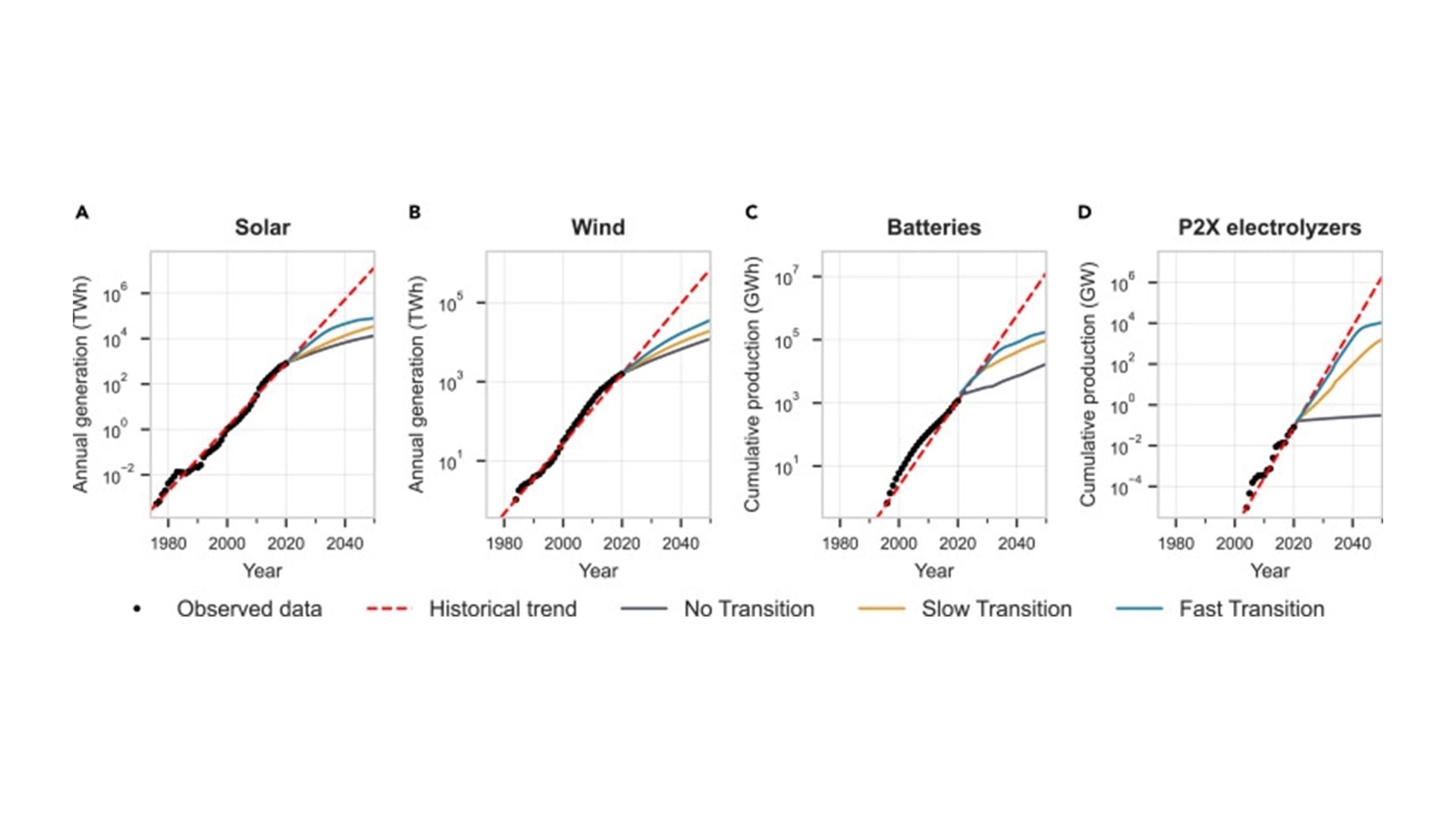The projected high cost of transitioning to zero carbon energy has deterred some companies from investing in clean energy and countries from setting policies to cut reliance on fossil fuels. A peer-reviewed paper from researchers at Oxford University published in September offers a more optimistic forecast on clean energy costs. Using empirically-grounded technology, the paper finds that switching to a decarbonized energy system by 2050 would save the world $12 trillion.
Research & Findings
The paper presents three different scenarios running from 2021 to 2070 of varying transitions to clean energy. In the No Transition scenario, fossil fuels continue to dominate the energy system. In the Fast Transition scenario, solar, wind, batteries, electric vehicles, and other green technologies provide a fossil-free energy system by 2050. Even without accounting for climate damages or climate policy co-benefits, using the Fast Transition scenario and transitioning to a net-zero energy system by 2050 would save the world trillions.

Throughout the study, researchers compared the predictions of thousands of transition cost scenarios in past energy models with the actual data of 45 years of solar energy costs, 37 years of wind energy costs, and 25 years of battery storage. Researchers discovered that these energy models massively overestimated the future costs of key clean energy technologies. For example, the real cost of solar energy has dropped twice as fast as the most ambitious projections in past energy models.
Renewable energy costs have actually been decreasing for decades; the researchers predict these prices will continue to trend downwards. The costs for key storage technologies like batteries and hydrogen electrolysis, for example, are likely to fall dramatically. Furthermore, accelerating the shift to renewables will make the technologies cheaper.
As lead author Dr. Rupert Way explains, “Our latest research shows scaling up key green technologies will continue to drive their costs down…the faster we go, the more we will save. Accelerating the transition to renewable energy is now the best bet not just for the planet, but for energy costs too.”
The push towards renewable energy is no easy feat, however. Even though the researchers found no major obstacles in bringing the necessary energy to scale—such as land use, climate, raw materials, and manufacturing capacity—significant institutional changes must be enforced. The paper argues that achieving the rapid deployment of key green technologies is likely to require “…strong international policies for building infrastructure, skills training and making the investments required to realize future gains.”
For more information on clean energy, check out our 4-Part nuclear energy exploration with episodes, articles, podcasts, and lesson plans HERE.
Or, tune in to Tomorrow’s World Today on the Science Channel at 8:30 am ET on Saturday, October 1, and Discovery at 6:30 am ET/PT on Sunday, October 2 to watch the first part of our nuclear exploration.
Check out more of the latest clean energy news and see how nuclear fusion power could be six years away, a foundation will award $3 million for clean energy grants, a career as wind turbine technician works, and hundreds of coal power plants could be converted to nuclear.







